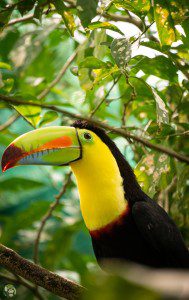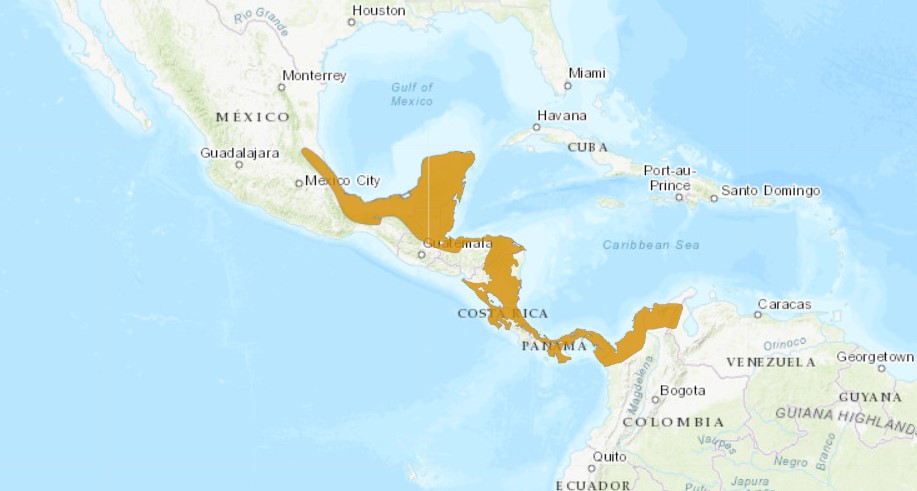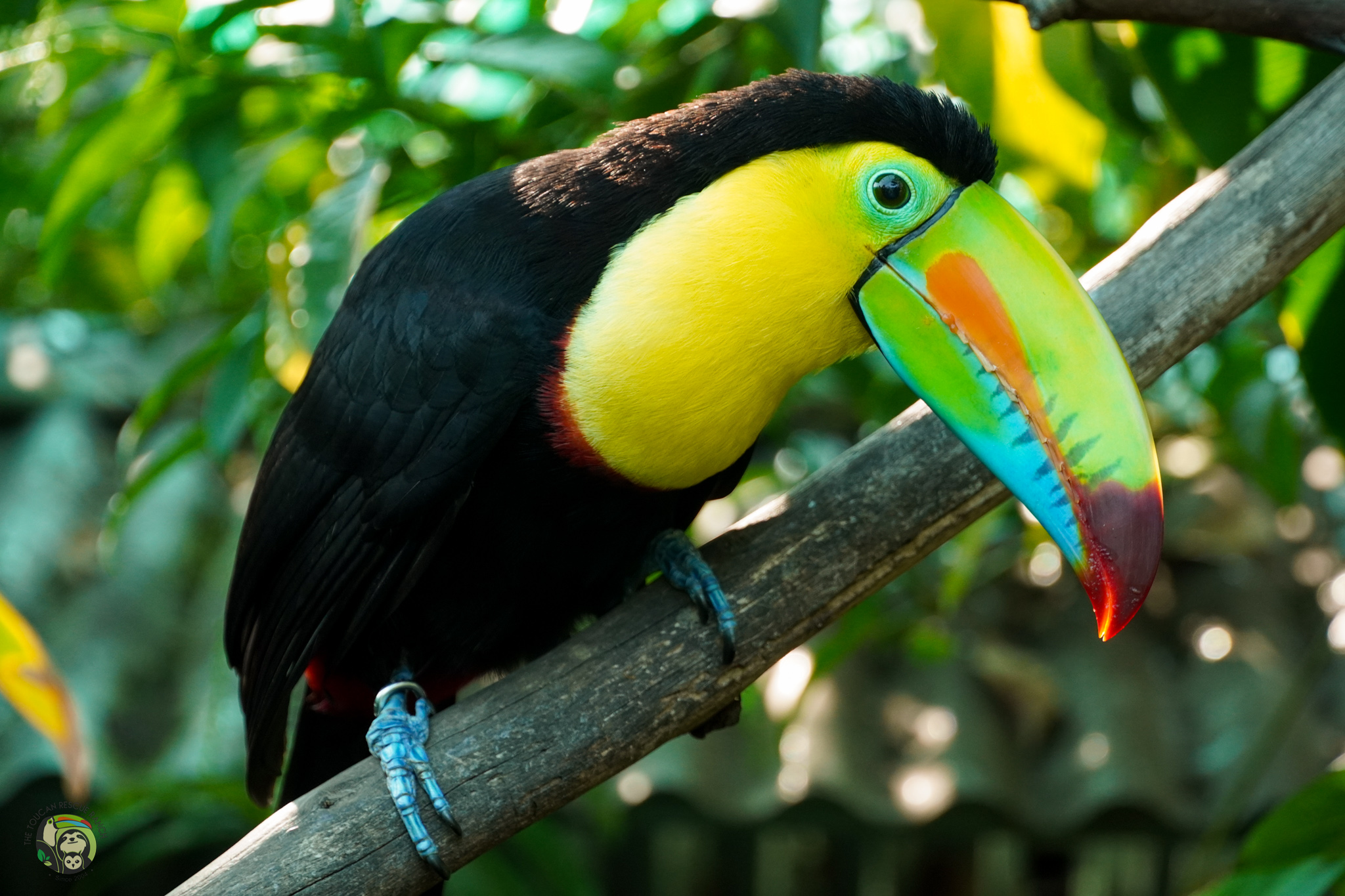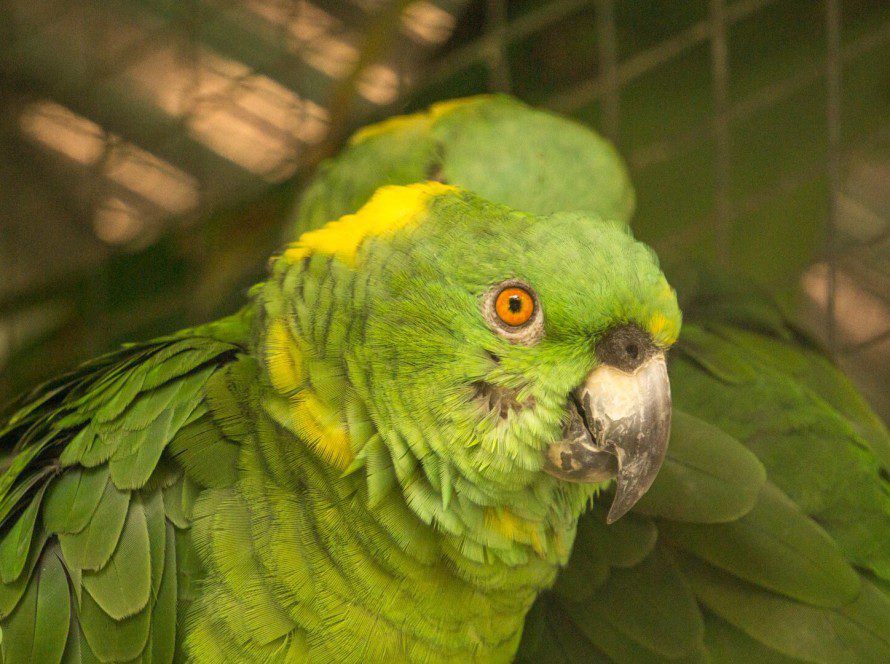Ramphastos sulfuratus brevicarinatus, R. s brevicarinatus
- CLASS: Aves
- ORDER: Piciformes
- FAMILY: Ramphastidae
- GENUS: Ramphastos
- SPECIES: sulfuratus
- SUBSPECIES: brevicarinatus
About the Keel Billed Toucan

The Keel-billed Toucan is one of the most iconic species of Costa Rica, its bright coloured beak has become synonymous with visions of trekking in the rainforest. Adults are mostly black with a vibrant yellow-feather bib covering their throat and chest and a green ring around their eyes. Your eye however is drawn to the large brightly coloured bill, a rainbow of colours: yellow, green, orange and blue with a red tip. Both sexes are similar in colour, but the males are larger.
With such a large beak you would assume it is heavy, but it is actually hollow and so quite light. The toucan’s beak is made of the protein keratin (the same that makes our hair and nails) with thin rods of bone for support. Toucans use their bills during courtship – they playfully duel and throw fruit to each other – and as a defensive weapon.
Interestingly Keel-billed Toucans are not very good at flying, instead they can often be seen moving from tree to tree mostly by hopping.
When toucans sleep, they turn their head so that their long bill rests on their back and their tail is folded over their head.
The Keel-billed Toucan produces a loud frog-like call that can be heard up to a half mile away.
Habitat and Diet
There are 2 recognised subspecies of Keel-billed Toucan: the larger Ramphastos sulfuratus sulfuratus, found in southern Mexico, Guatemala and Honduras, and the smaller Ramphastos sulfuratus brevicarinatus found ranging more widely from Mexico to Colombia. It is the subspecies Ramphastos sulfuratus brevicarinatus that calls Costa Rica its home.
The Keel-billed Toucan is found in tropical lowland evergreen and secondary forests. They are arboreal, which means they live in the trees.
These birds are omnivores; they feed primarily on fruit, such as papaya, mango and banana, but will occasionally eat insects, reptiles, birds, and eggs.

Behavior and Family Life
Keel-billed Toucans are monogamous, they form male-female pairs, make a nest and raise their young together. These Toucans prefer to nest inside tree cavities in holes already excavated by woodpeckers. They can be quite fussy and favour cavities about 20 feet off of the ground with only a small entrance hole.
They will start nesting up to six weeks before eggs are produced, beginning by clearing out their nest cavity until it is bare. Females lay a clutch size of 2 to 5 round, white, glossy eggs. Both parents will then take turns to incubate the eggs with their body heat for 15 to 20 days.
Once hatched the little pink, featherless chicks wont open their eyes for 3 weeks. The chicks have heel pads that protect their feet and keep them elevated from the damp floor until they fledge. The young are completely dependent on the care of their parents, and the parents take turns feeding fruits to the chicks; both will keep the nest clean by removing fecal matter from the nest, and guard and protect the young.
The chicks will fledge the nest at 8 or 9 weeks old, having fully feathered and grown larger beaks. However they won’t reach sexual maturity to have their own families until they are 3 or 4 years old.
At the Toucan Rescue Ranch
The Toucan Rescue Ranch rescues dozens of keel-billed toucans annually. Largely their rescue is due to deforestation from logging and the illegal pet trade. Many cases involve people cutting trees not knowing there is an active toucan nest, which severly injures the offspring and leaves them orphaned.
Another major issue is the illegal pet trade. Even with law stating that it’s illegal to keep native wildlife as pets or for sale; sadly, this has not completely prevented these animals ending up in homes or being sold. Many of permananet residents in our care were confiscations due to the illegal pet trade. Toucans are naturally inquisitive animals witih a fairly high intelligence, so they are easily habituated which severely detremients their chances of rewilding.
Life Span
Life expectancy is 15 – 20 years
Young
- Incubation period: 15 – 20 days
- Number of young at birth: 1 to 4
- Age of maturity: 8 to 9 weeks
Size
- Length: 17 to 22 inches (42 to 55 centimeters)
- Weight: 13 to 18 ounces (380 to 500 grams)
Conservation
IUCN Red List: Least Concern
Keel-billed Toucans are listed as Least Concern on the IUCN Red list because they occupy such a large habitat range, however numbers are declining and they are threatened by deforestation and habitat loss. Many species of toucan are captured from the wild and sold as popular pets due to their bright coloured bills and keen intelligence. Finally these beautiful individuals are also hunted for food and their bills taken as trophies.





